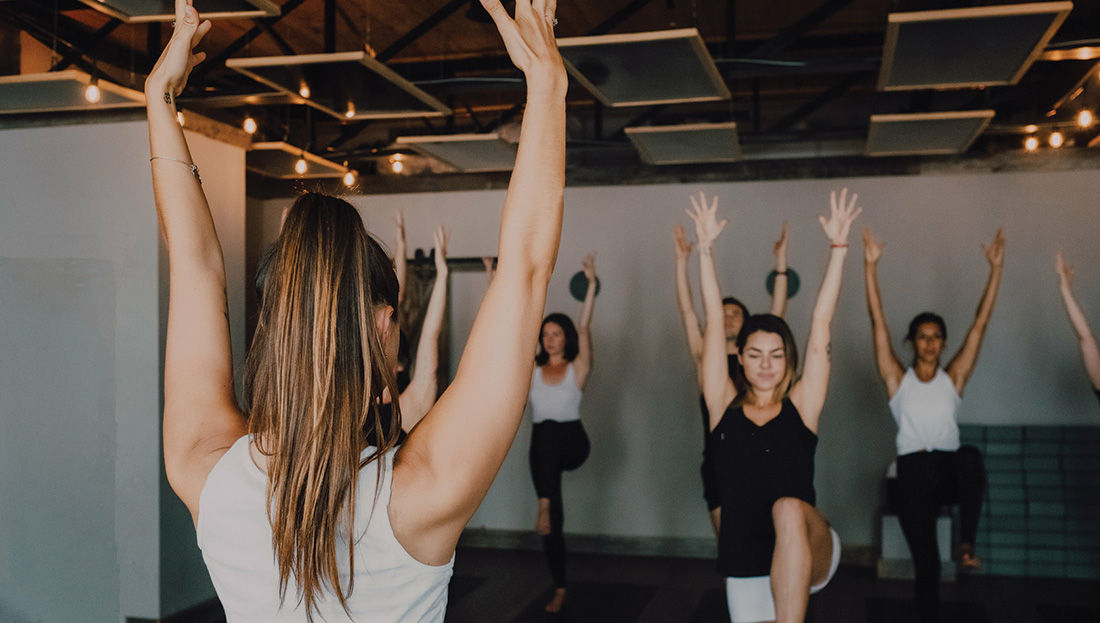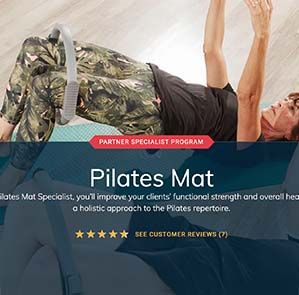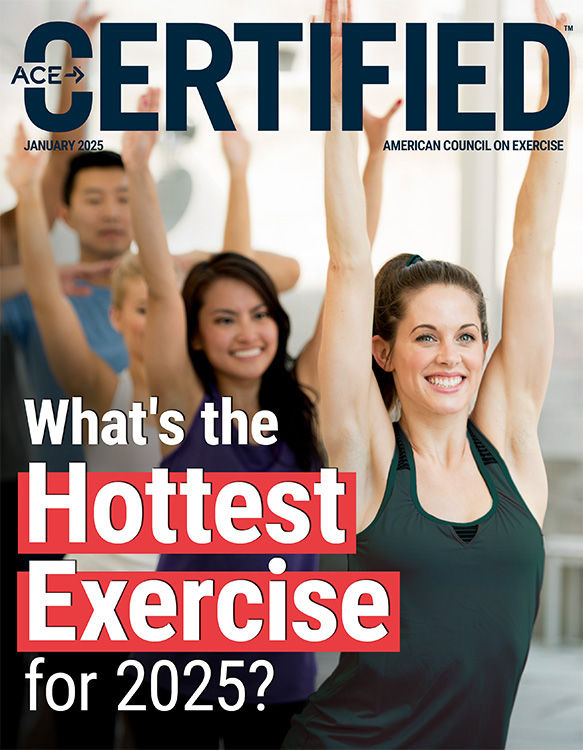
Pilates is experiencing a remarkable resurgence (although some might argue it never left), capturing the interest of diverse audiences worldwide. Once considered a niche discipline favored by dancers and elite athletes, Pilates has transcended its origins to become a sought-after fitness modality for people of all ages and abilities. From studio sessions to virtual platforms, it’s clear that this low-impact, yet highly effective, workout has struck a chord with fitness enthusiasts everywhere.
What makes Pilates so universally appealing? Its blend of strength, flexibility, and mindful movement offers something for everyone. Whether you’re working with clients aiming to improve their posture, enhance functional fitness or recover from injury, Pilates delivers results in a way that feels both challenging and rejuvenating. As health and exercise professionals, understanding the growing demand for Pilates can help you tap into its potential to elevate your offerings and meet the needs of an ever-expanding audience.
If you know anything about the history of Pilates, you’re probably aware that it was developed during WWI by Joseph Pilates while he was held as a prisoner of war in an internment camp. While imprisoned, Pilates worked with other internees, helping them heal from the ravages of war and imprisonment. He came up with some pretty creative means to help even bed-ridden POWs by attaching springs to beds—which acted as resistance—and creating contraptions that allowed them to work out. These gadgets became the prototypes for what would eventually be Pilates’ first formal apparatus, the Pilates Reformer machine.
After the war, Pilates came to America and worked with dancers who needed rehabilitation from injury. Pilates originally coined his method “Contrology.”
A lot has happened in the world of Pilates since those early days. Pilates went on to design several more apparatuses and Pilates training and certifications were developed. In the 1980s, media coverage of celebrities engaging in the Pilates method ignited the enthusiasm of the general public, and the popularity of it really took off in the 1990s.
Though its popularity remained relatively stable in the ensuing decades, Pilates was largely overshadowed by two powerhouse modalities: yoga and high-intensity interval training workouts. But lately, Pilates seems to be everywhere, popping up at gyms big and small, dedicated studios and on social media platforms. Even so, Pilates didn’t make the American College of Sports Medicine’s (ACSM) list of top 20 trends for 2025. So, is it still “in”?
“It’s surprising that Pilates didn’t make the list for 2025,” says Geoff Bagshaw, group fitness manager and instructor for Equinox West Georgia Street in Vancouver, BC. “In my experience, Pilates is thriving and demand has only continued to grow. Every Pilates Mat class is consistently waitlisted, and we have members on standby, hoping for a spot. Reformer and other equipment-based classes are also extremely popular. People are recognizing the wide-ranging benefits of Pilates, which has only fueled its demand.”
Tabatha Russell, MA, NCPT, owner of tabPILATES in Chicago agrees, stating that Pilates remains highly relevant. “Its lasting appeal goes beyond trends, as it consistently attracts a loyal community and meets diverse needs. Many now view it as an enduring wellness practice, not just a workout. Plus, virtual and on-demand options have made it more accessible than ever, ensuring Pilates will continue to be essential and valued long-term.”
John Garey, MS, NPCP-CPT, founder and CEO of John Garey TV and Pilates Grad School, and on the board of directors for the National Pilates Certification Program, feels that Pilates rises above trends. “Pilates is evergreen, particularly for those who understand the value of a sustainable, functional workout.”
“If anything, I see Pilates growing!” says Nico Gonzalez, NCPT, a personal trainer and Balanced Body Educator. “I’ve seen an increase in the number of individuals starting their Pilates teacher journeys since [the COVID-19 pandemic]. And the major push of franchise-based Pilates studios popping up everywhere has exposed Pilates to more enthusiasts!”
Want to learn more about Pilates and how to add this modality to your offerings? Check out ACE’s Pilates Mat Specialist program!

Trends Within Pilates
As Pilates has grown in popularity, perhaps the “trendy” part has been in its evolution. While the Reformer is effective, it isn’t for everyone or always accessible. So, instructors have come up with some pretty creative ways to draw more students, both in person and online.
“While some still prefer Classical Pilates as designed by Joseph Pilates, many classes are now adopting more of a fusion approach,” explains Bagshaw. “These hybrid workouts often integrate elements of Barre and yoga, using props like balls, Pilates rings, and mini-bands and weights to add variety and challenge.”
“One major trend right now is a stronger focus on ‘active’ movement and how Pilates supports functional fitness,” says Russell. “There are also newer trends like ‘wall Pilates’ and ‘hot Pilates,’ which bring creative variety to the method.” You can find examples of these trends on YouTube, including standing Pilates for those who don’t want to lie down at all, and wall Pilates for those who do. Both options are creative—and practical.
Garey says his platform has embraced the Pilates evolution by incorporating interval training into classes, where they mix traditional strength-training exercises, cardio intervals and classic Pilates. “This fusion keeps workouts engaging and helps clients achieve diverse fitness goals, whether that’s building muscle, enhancing endurance or improving mobility,” says Garey. “However, we always stay true to the core principles of Pilates, ensuring that the integrity of the method is maintained, even when adding variety.”
Once considered a workout exclusively for the elite, Gonzalez says that with the franchising of Pilates studios, clients now have a buffet of options for how they want to train in the Pilates method. “Options include following the traditional work, contemporary approaches, rehabilitative methods and fitness-based movements inspired by the original work. Some newer trends that have become popular in Pilates that I’ve seen include using resistance bands and tubes to add challenges to the Pilates mat exercises.”
While Gonzalez applauds these new trends and sees them as a “gateway into a more comprehensive journey into Pilates,” not everyone is as on board.
“While I don’t mind variations on the theme, I personally feel they’re unnecessary,” says Russell. “As a comprehensively credentialed teacher of the Pilates system with over 25 years of experience, I’m continually amazed and encouraged by how much more there is to discover. The [Classical Pilates] system just keeps giving!”
Russell cites some downsides to the franchising and trendy aspects of Pilates. “As [Pilates] becomes more commercialized, many ‘Pilates-inspired’ classes stray from its core principles, diluting its true benefits,” says Russell. “Perhaps the most troubling is the rise of quick, inadequate training programs that produce instructors who are unprepared to safely support clients.”
With the rise of franchised Pilates studios, Russell also feels that it’s leading inadequately trained instructors to burnout, especially those receiving low wages. “Quick certifications do not adequately prepare instructors for teaching, let alone operate effectively as an industry professional,” says Russell. “Additionally, large studios and high-demand environments often push skilled instructors to burnout, further devaluing their expertise and passion for the practice.”
All Are Welcome
Despite the downsides, there’s another trend within Pilates that is definitely a welcome one. “We’re seeing more men joining Pilates classes, as they discover how Pilates complements other types of training by improving strength, flexibility, posture and body awareness,” says Bagshaw. “Although our classes are still largely attended by women, male participation is on the rise, with some classes showing up to 25% male attendance. This shift reflects a growing understanding that Pilates is highly beneficial for everyone, regardless of gender.”
And this trend is not exclusive to Equinox studios—50% of Gonzalez’s private session clients are now men. “And many men participate in small-group Pilates training, as they now see the benefits towards their other activities, like tennis, pickleball, running and biking. I have men in my group Pilates session because they immediately see the connection to their favorite sports and the immense benefit of the method in their bodies.”
“While women still lead in numbers, we’re seeing more men incorporating Pilates into their routines,” says Garey. “At JGTV, roughly 30% of our members are men, compared to about 10% just a few years ago. The reason? Men are starting to recognize the benefits of Pilates, not just for flexibility, but for strength and injury prevention as well.”
Fusion classes may also play a role. “By combining fitness elements with traditional Pilates, we’ve made it more appealing to those who want a challenge that improves athletic performance and supports functional strength,” says Garey.
Pilates is also different from traditional group fitness classes, attracting people who don’t want to feel out of place if they fall out of rhythm. “Pilates does require having good rhythm and flow to movements,” says Gonzalez, “but it’s very different than your typically music-based group fitness class. As a Pilates trainer, it is great to teach sessions that allow the participant to enjoy the class without worrying about keeping up with the beat, everyone doing the same movement at the same time so you will look out of place, or performing the exercise like the instructor instead of working on the range of motion that each individual has.”
The Future of Pilates
It looks like Pilates—in all its forms—is here to stay. “I believe there’s a growing trend towards goal-focused fitness,” says Garey. “People don’t just want to work out—they want to see results. It’s not just about showing up. It’s about transforming your fitness journey.”
Which is exactly what Pilates does.
“Pilates remains a foundational training modality that benefits a wide range of fitness levels,” agrees Bagshaw. “As more people seek functional training and mindful movement practices, I anticipate that Pilates will remain a core offering in the fitness industry, regardless of its position on trend lists.”





 by
by 



